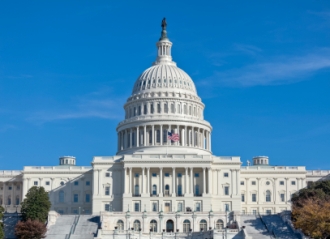Washington, DC, February 21, 2013 - The Secondary School Student Athletes' Bill of Rights has been introduced as House Resolution 72 (H. Res. 72) by Congressman Jim Gerlach of Pennsylvania. The bill is based on a bill of rights created by the Youth Sports Safety Alliance, an organization committed to keeping young athletes safe founded by the National Athletic Trainers' Association which now counts more than 100 organizations (including MomsTEAM) as members.

The introduction of the resolution in the U.S. House of Representatives comes two weeks after the the Alliance held its 4th annual Youth Sports Safety Summit in Washington, DC, where the first-ever National Action Plan for Sports Safety was issued and later presented to congressional members and their staffs in over 100 visits to Capitol Hill.
"The Bill of Rights was created by the Alliance to address the important rights of young athletes when participating in secondary school sports programs," says Jim Thornton, president of the National Athletic Trainers' Association. "This document outlines essential elements that should be recognized by the athletes themselves, along with their parents, school and sports officials, and policymakers at all levels."
Congressman Gerlach said the resolution supports the ideals of the Secondary School Student Athletes' Bill of Rights and encourages athletes, parents, coaches and health care professionals to take a proactive approach to improving the health and athletic experiences of the nation's approximately 7.7 million athletes. who participated in secondary school athletics during the 2011-2012 academic year, during which they sustained more than 1.3 million injuries, of which the NATA estimates that 22 percent were from concussions,*** a condition that continues to increase despite the overall decrease in youth sports injuries.
"Great memories and an appreciation of teamwork, perseverance and sportsmanship are the only things we want student athletes carrying with them long after their playing days are over," Gerlach said. "That's why I am pleased to partner with the National Athletic Trainers' Association and other organizations in raising awareness about the practical steps that can be taken to better protect student athletes and reduce the risk of serious injuries. In addition to encouraging the development and implementation of best practices, this resolution recognizes those schools and athletic programs that have successfully put into place policies promoting student athlete safety."
"Recent research1 has shown that student-athletes with access to certified athletic trainers have lower overall injury rates, lower recurrent injury rates and lower concussion rates than student athletes without access to them," said Thornton. "This resolution raises awareness of the need for increased youth sports safety protocols and encourages schools to develop and adopt best practices and standards to prevent and address student athlete injury."
Bill of Rights highlights
The resolution calls for student-athletes to have the right to:
- Be coached by individuals who are well-trained in sport-specific safety and to be monitored by athletic health care team members:
- Have pre-participation examinations and participate in sports under a comprehensive concussion management plan;
- Play on safe, clean playing surfaces, in both indoor and outdoor facilities;
- Utilize equipment and uniforms that are safe, fitted appropriately and routinely maintained;
- Participate safely in all environmental conditions where play follows approved guidelines and medical policies and procedures, with a hydration plan in place;
- Play sports in environments with venue-specific emergency action plans that are coordinated by the athletic health care team and are regularly rehearsed with local emergency personnel;
- Be insured privacy of health information and proper referral for medical, psychosocial and nutritional counseling.
- Immediate on-site injury assessments with decisions made by qualified sports medicine professionals
- Have the right, along with parents, to the latest information about the benefits and potential risks of participation in competitive sports.
"Parents should be encouraged to ask school officials about safety policies and protocols that keep their athletes on the field and off the sidelines," says Thornton. "We are committed to increased education, research and legislation that continues to help us reduce incidence of injury and improve safety of care across the high school landscape."
To view the full document click here.
Source: National Athletic Trainers' Association
***Note: This figure is considerably higher than that reported in the most recent study of concussions in high school sports, which found that concussions accounted for 13.2% of all injuries. Marar M, McIlvain NM, Fields SK, Comstock RD. Epidemiology of Concussions Among United States High School Athletes in 20 Sports. Am J Sports Med. 2012;40(10):747-755.
1. LaBella L. A Comparative Analysis of Injury Rates and Patterns Among Girls' Soccer and Basketball Players. Paper presented October 22, 2012 at American Academy of Pediatrics (AAP) National Conference and Exhibition, New Orleans, LA; High Schools with Athletic Trainers Have More Diagnosed Concussions, Fewer Overall Injuries. Science Daily http://www.sciencedaily.com/releases/2012/10/121022080649.htm (retrieved February 21, 2013)
Posted February 22, 2013








